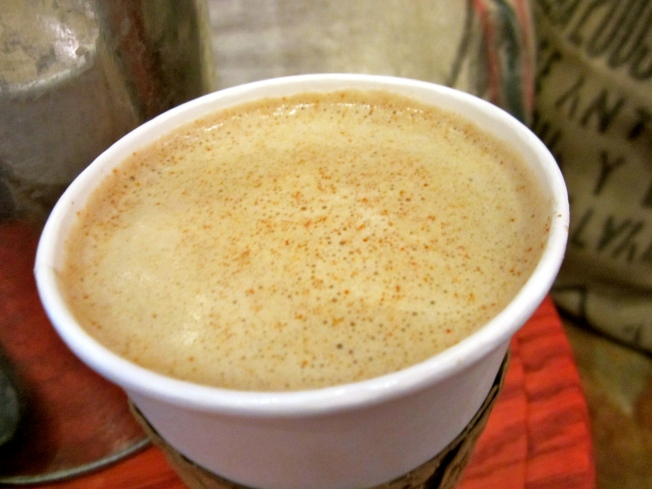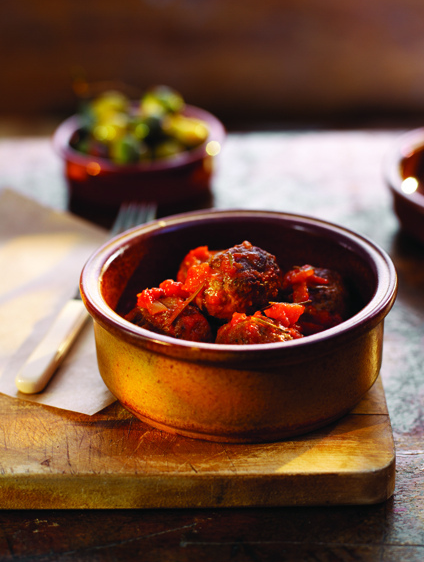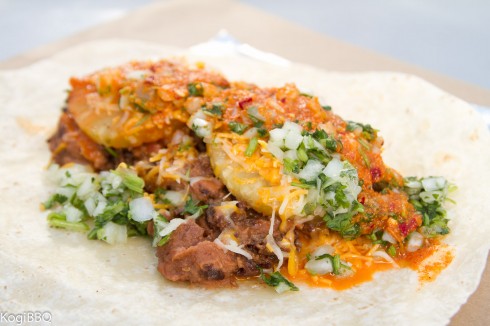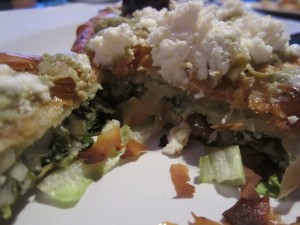JMC 305 Audio Slideshow Project
Susan G. Komen Race for the Cure, Phoenix.
Día de los Muertos: A day to honor the dead, and enjoy delicious bread.
Celebrated in Mexico and select locations in the United States, Día de los Muertos (Day of the Dead) is a holiday that takes place October 31st through November 2nd. Día de los Muertos is used to honor the dead, whose spirits visit every year, once a year, in a traditional and festive way.

Pan De Muerto (Photo by: http://www.mexconnect.com)
On the outskirts of Mexico, relatives of the dead travel to the cemeteries in which their lost loved ones are buried, and they have a picnic consisting of their loved one’s favorite foods. Grave sites are often decorated with toys for the children who have passed away, and bottles of tequila for the adults.
If you are familiar with any Día de los Muertos celebration, you’ll probably find yourself most familiar with the tradition of transforming a room into an altar for the deceased relative. This is a tradition that is practiced in larger cities in Mexico and in the United States.

Día de los Muertos Altar (Photo by: http://www.mexicansugarskull.com)
Having taken Spanish classes since my freshman year in high school, I’ve had many opportunities to learn the history and origins of Día de los Muertos. As you may or may not have guessed, I find the most fascinating part of the tradition to be the food.
Just as families provide for lost loved ones at their grave sites, they provide favorite foods for their loved ones at the altars as well. So when the spirits make their yearly visit, they will be pleased by the food and drink you have left for them to enjoy. You may see different foods finding their place among different altars, but one food I guarantee you’ll see every time is “pan de muerto”, or “bread of the dead”.
Pan de muerto is a sweet bread that comes in many varieties. Mexican sweet bread is a blessing from the baking gods, and is a food that is certainly worth trying. This simple egg-bread topped with sugar, is the staple of a rich, cultural tradition. I suggest making pan de muerto a to-do on your list of things to bake this fall.
In addition to the different foods you will find associated with Día de los Muertos, there are ceremonies and events that take place to celebrate the lives of those who have passed away.
Enjoy!
– Gabrielle Castillo
A Delectible Local Dish. Holy Crepe, That’s Good.
It all began in a little region in the north-west of France by the name of Brittany. A stuffed pancake of sorts was brought into this world and conquered France, one delicious combination at a time. Ladies and gentlemen, the crepe.
The crepe itself is a paper-thin pancake made from wheat flour. What we are most familiar with are the meals known as crepes. Since the crepe is a plain-tasting pancake, the dishes you can create with it are endless. Essentially, you can find whatever you like, put it inside of a crepe, and enjoy your very own creation.
Crepes are divided into two categories: sweet and savory. Sweet crepes oftentimes include fruit, whipped cream, sweet ricotta cheese, jams, chocolate chips, cinnamon or Nutella. Savory crepes can be made up of different meats (ham is popular), cheeses, and vegetables.
My go-to crepe is made with banana, Nutella, and whipped cream. In my opinion, you can’t go wrong with a good ol’ fashioned fruit and chocolate combination. However, more recently I’ve decided to take the adventurous route, yet again, and try something new. When it comes to food, nothing is out of my comfort zone, so I wasn’t worried.
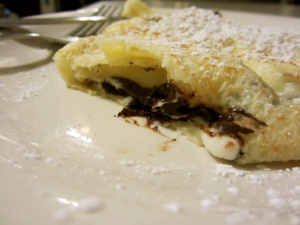
Crepe made with sweet ricotta cheese, chocolate chips, and toasted almonds. Photo by: Gabrielle Castillo
I ventured to Jobot Coffee Shop on 5th St. in downtown Phoenix and I have now spent three consecutive evenings at this location. Their large crepe menu fueled my craving for one of these French dishes and I decided on a crepe made with sweet ricotta cheese, toasted almonds, and chocolate chips. A crepe inspired by the Italian dessert, the cannoli. With its unique texture and rich flavor, I fell in love.
You’d be surprised by how many places offer crepes, sweet and savory. But if you don’t feel like leaving the kitchen to acquire one of these delicacies, making them at home is a simple task. All you need is a simple batter mixture and your filling of choice. My sweet tooth recommends chocolate.
Bon Appétit!
– Gabrielle Castillo
You’re a Jerk. Chicken, That Is.
Outside of the culinary world, “jerk” is a term that is often used in a derogatory context. “Jerking”, on the other hand, became a dance fad for a solid year. However, on the island of Jamaica, “jerking” is a unique method of wood-fire barbecue.
This cooking technique has transformed throughout the years, beginning with cooking meat (traditionally pork or chicken) over a simple, slow flame in a pit, to cooking over fire inside the half of a steel drum. Jerk-style cooking is not only unique in method, but unique in flavor as well.
The preferred meat uses a dry-rub containing the two most vital ingredients for a Jamaican jerk spice: allspice (pimento) and Scotch Bonnet peppers. Scotch Bonnet peppers are among some of the hottest peppers in the world, with a heat rating of 100,000 – 350,000 Scoville units. To put that in perspective, Tabasco sauce has a rating of 3,500 – 8,000 Scoville units. This pepper means business.
At The Breadfruit in downtown Phoenix, Arizona, I was able to try this intimidating (but delicious) jerk chicken dish for myself. Their “Jerk Chicken off the Grill” is a chicken breast marinated in their very own house spicy jerk rub, grilled over pimento wood, and topped with a mango chutney. I’m not particularly adventurous when it comes to spicy food of any sort, but this was well worth it.

Jerk chicken accompanied by roasted pineapple, roasted corn on the cob, baked festival, and ital coleslaw. (Photo by Gabrielle Castillo)
The flavors I experienced in this dish weren’t typical of a spicy Asian or Mexican style food. The jerk chicken had a tropical, spicy flavor about it (enhanced by the mango chutney) and was a flavor I hadn’t been introduced to, but was happy to have met.
Seek out your warm beach, grab a towel, your Jamaican accent, a favorite steel drum band (I have one, don’t you?), and enjoy the tropical flavors a dish like jerk chicken has to offer.
Ya mon, check it deep.
– Gabrielle Castillo
Forgive the cliché pop-culture reference of a title I have chosen. Thank you, New Boyz.
Consume Caffeine in a Creative Way
Coffee is oftentimes considered a college student’s best friend, and I can attest to that. Coffee is what I rely on to be my morning pick-me-up or my midday energy boost. But I must give credit where credit is due, and I’d like to thank Ethiopia for this wonderful cup of bliss I am holding.
Ethiopia is believed to be the birthplace of coffee, and wasn’t consumed until the Arab world caught wind of its mesmerizing aroma. It eventually spread to India, and soon enough took over all of Europe. Today, the top coffee producing countries aren’t in Europe, but in Central and South America and Asia. Brazil is responsible for producing the majority of the world’s coffee to date.
Living in the urban environment that is downtown Phoenix, I’ve stumbled upon various coffee shops in the area. Late this afternoon, I ventured down Central Ave. to One Coffee Co. to enjoy whichever coffee on the menu caught my eye. In a month like October, I’m immediately drawn to anything and everything with the word “fall” in front of it, and this afternoon, the “Fall Specials” menu had me at hello.
Two words: Spanish Mocha.
A café mocha is a classic coffeehouse beverage that is an adaptation of the café latte. The café mocha is known for its subtle chocolate flavor. The Spanish Mocha, however, is made like a normal café mocha with the addition of cayenne pepper. This combination of sweet, bitter, and spicy can be found in coffee throughout the Americas (a favorite of the Mayans). Adding the cayenne pepper to the coffee did not create a spiciness similar to that found in a typical spicy dish. This is an evident spicy that is felt in the throat rather than on the taste buds, adding to the warmth of the coffee itself.
I’ve come across a unique coffee blend or two, but this was the most interesting (and delicious) blend I’ve experienced. The next time you go on a coffee run, don’t be afraid to wake up with a little flair and try those uncommon blends of coffee. You never know when you might stumble upon your next preferred coffee beverage.
Enjoy!
– Gabrielle Castillo
A Jazzy Meal from Down South
Cajun cuisine is one of the most diverse types of cuisine in the world of food today. Several of its dishes are arranged like a symphony of world influence, compiled of flavors found in African, Caribbean, French and Spanish dishes. There is no better way to introduce this medley of flavors than throwing them all into one Cajun dish, and that dish, would be gumbo.
Originally from Louisiana, gumbo is a thick stew or soup, that emerged in the 1700s. Gumbo was a cheap way to make a large quantity of food at one time, using minimal amounts of meat. Since a multitude of nationalities lived together in the south, gumbo was a proactive way to share cultural differences through the food they created.
Cajun gumbo (as opposed to Creole gumbo) is heavier with French influence and is often darker and spicier. A typical Cajun gumbo is made with roux, which is a cooked wheat and flour mixture. Roux is what gives gumbo its stew-like consistency.
Upon adding any type of shellfish or meat (andouille sausage, catfish, shrimp) and vegetables (bell peppers, celery, onions) the heat factor is a necessity, and Cajun gumbo is widely known for its spicy quality. What gives this dish its heat is the liberal amounts of cayenne pepper used in each batch. A nice way to balance out the assortment of flavors and spices, is pouring the gumbo over rice.
As you may have already inferred, gumbo is a perfectly hearty meal made to serve many. So, at your next gathering, why not break out the trumpet that’s been hiding in the attic? Turn your home into its very own French Quarter and share a gumbo recipe or two with friends and family.
Bon appétit!
– Gabrielle Castillo
Spanish Tapas: Not Your Typical Afternoon Snack
During the hours between lunch and dinner, it is common to go searching for a snack to sustain one’s appetite for four to five hours. Sometimes we satisfy our cravings with simple foods such as milk and cookies, fruit, or popcorn.
In Spain, the hours between lunch and dinner are usually far longer, but the midday hunger is welcomed by several small dishes known as tapas.
Tapas are small appetizers in Spanish cuisine that can range from something as simple as aceitunas (olives with a red pepper filling) to something as distinct as chopitos (small squid, battered and fried). Tapas serve the purpose of satisfying midday hunger and as food to enjoy while wine tasting or bar-hopping (a typical activity between work and dinner).
Last year, I made a trip to a Spanish restaurant in Fullerton, California, called Lizarran. At Lizarran, I was able to have a unique food experience in learning that this was no typical afternoon snack. While I was there, I sampled a few tapas, and my favorite was the Albondigas con Tomate (Spanish-style meatballs in tomato sauce). It wasn’t the most adventurous of choices, but the Spanish-style meatballs introduced a flavor different from the typical Italian meatball.
However, I do encourage going out on a limb and trying the tapas that leave your mouth watering, or make you cringe just by the description.
The pulpo a la gallega graciously awaits your arrival.
¡Disfrute!
– Gabrielle Castillo
As Long As There is Food, There Will Be Food Trucks.
What is it that makes eating food right from a truck so appealing?
Gourmet food trucks have made their way onto the list of food fads that have transpired over decades. Their popularity has swept the nation and they have become a simple way to stop and enjoy interesting, gourmet foods with a fast food feel.
Back home in southern California, I’ve noticed the rapid growth of food trucks and food truck fairs, all featuring local trucks. The truck that arguably started it all was the Kogi Korean BBQ food truck out of Los Angeles.
Kogi is widely known for their Korean Mexican tacos (spicy pork, tofu, chicken, short rib), and is one of the first food trucks to introduce this fusion cuisine. Kogi took advantage of the rise in social media to attract visitors to their truck’s location via Twitter. Soon enough, it became customary to follow @kogibbq on Twitter, and find the truck as it would tweet its next stop.
This food truck craze has produced some very unique ideas for food to-go.
The Tornado Potato food truck, also out of Los Angeles, has wowed its visitors with a large, fried potato in the shape of a tornado, with various toppings.
My personal favorite is the Lime Truck, an Orange County native, just like myself. The Lime Truck has been featured on season two of the Food Network’s “The Great Food Truck Race”, and is known for its fresh, healthy cuisine.
You can find a food truck serving anything from cupcakes to sushi nowadays, and the way I see it, this food truck fad will continue to transform the culture of the way Americans eat food.
The greatest part about this food truck fad is that it will live on forever. As long as there is food, there will be food trucks.
Enjoy!
– Gabrielle Castillo
FPP: Feta Protection Program; a Greek Delicacy
When I dream of Greece, two things cross my mind: Santorini and feta cheese.
Feta cheese is the wonderfully salty, brined curd cheese that is sprinkled on many Mediterranean delicacies and whose roots can be pinpointed back to the days of the Byzantine Empire. Feta cheese is subject to special treatment in the world of food, due to the fact that it has claimed “PDO” status.
“PDO” stands for “Protected Designation of Origin”, meaning that the food must be made in a traditional manner and carry out qualities that are determined solely by natural and human factors of its region. Therefore, feta cheese must be made of goat or sheep milk in Greece and nowhere else.
Seeing as Greek food is my favorite type of food, I enjoy feta cheese to no end. Oftentimes at Greek restaurants, you will find feta cheese used in traditional and modern dishes, and here are two of my favorite:
Spanakopita is a Greek spinach pie that is among the traditional feta dishes. With its flaky crust, spinach, crumbled feta cheese, egg and onions, Spanakopita is a traditional way to experience the distinct flavor that feta cheese has to offer.
A more modern dish that can be found in select Greek restaurants, such as My Big Fat Greek Restaurant and Daphne’s Greek Cafe, is a dish with french fries and feta cheese. My Big Fat Greek Restaurant serves their “Greek Fries” with french fries, crumbled feta cheese, and a lemon sauce.
Each of these dishes offer a unique experience with feta cheese. Feta cheese can also be found on certain dishes such as a traditional Greek salad, or feta cheese and Kalamata olives (also known as Greek olives).
Greek can be an intimidating type of food to experiment with, but do not fear, for this is the food of the gods. From lamb to tzatziki, there are many bold, salty, and tangy flavors that will leave you longing for a stroll down the Agios Georgios beach and your taste buds wanting more.
Opa!
– Gabrielle Castillo



